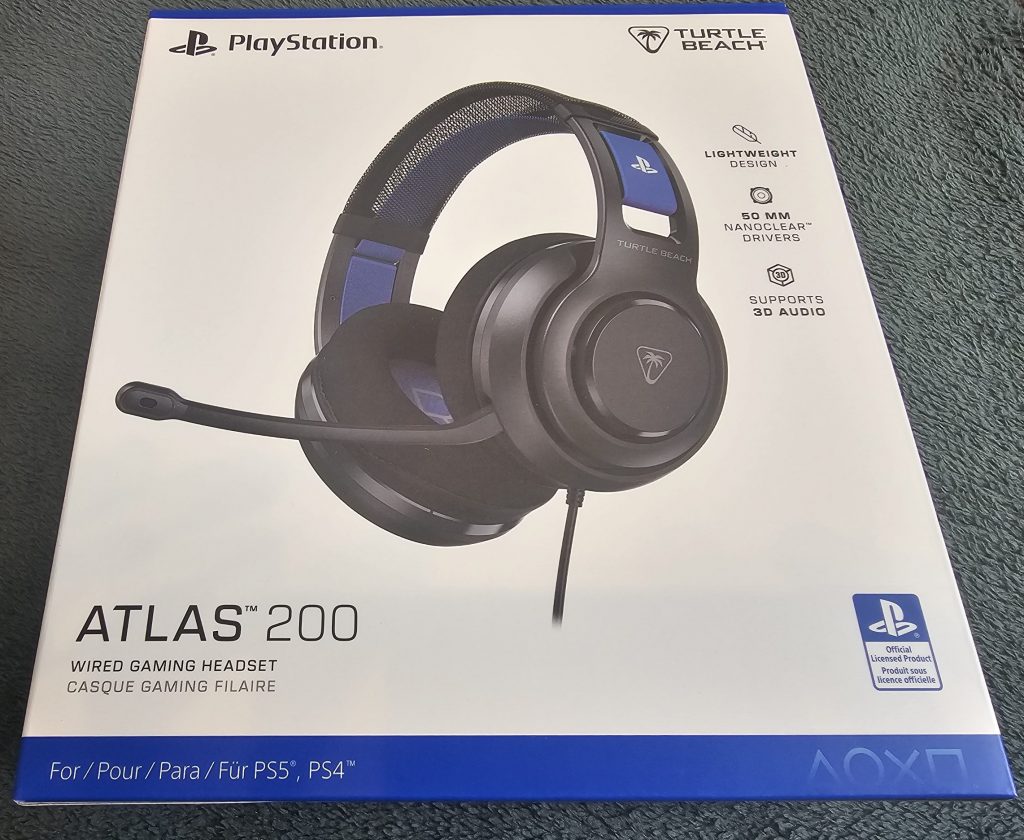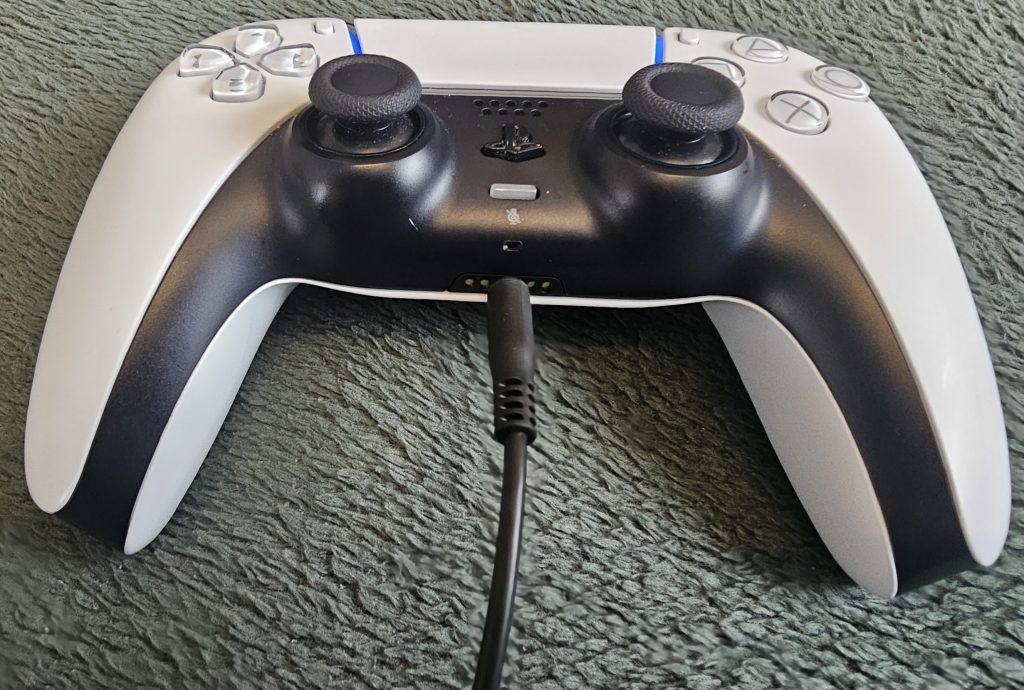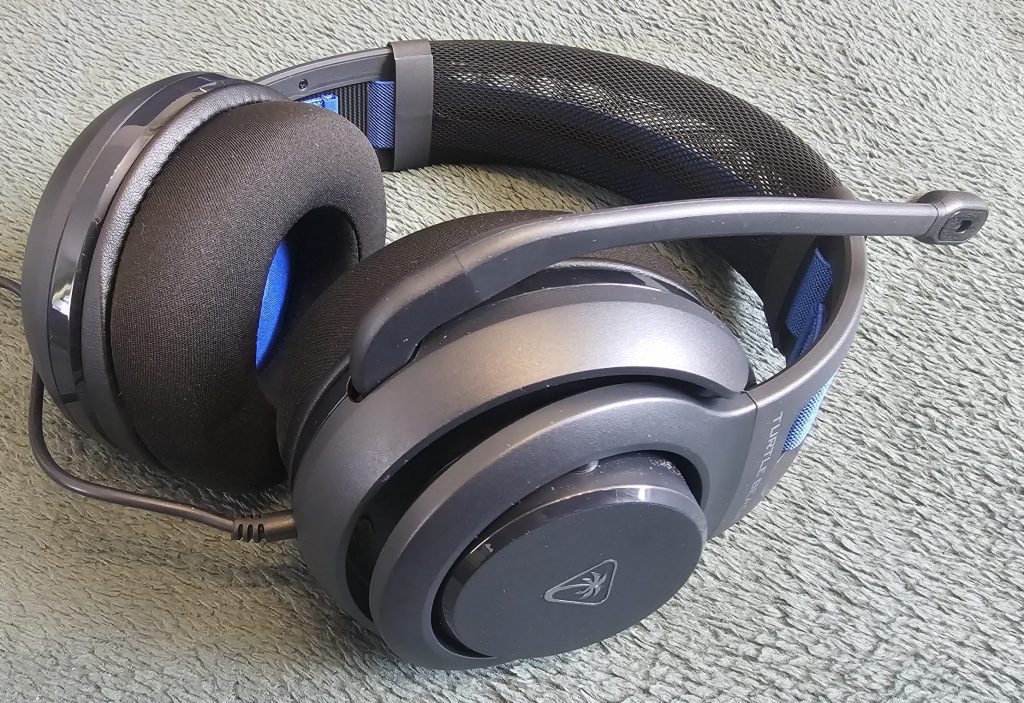In the same way that Mad Catz had the third-party controller market sewn up for in previous generations, when we think of audio headsets for gaming, we generally think of Turtle Beach. This US-based has been pushing out gaming hardware since 2005 but really came to prominence when the Xbox 360 came out. Sure, the 360 remains pound-for-pound the GREATEST CONSOLE OF ALL TIME but the bundled in headset was shite. So if you wanted to up your audio experience, you needed to go third-party and a lot of us opted for Turtle Beach.
And to this day, I actually still use a Turtle Beach headset. In fact, when my Turtle Beach: Earforce P4C (LOL “Earforce”), which followed me from 360 to PS4, finally died on me, I had to scour the grey market and find another. The one cup layout still remains perfect for my use-case. I’ll never be without one.
But, we’re here to test the new Turtle Beach Atlas 200. This model’s roots go back to 2018 when the company launched the Atlas line, targeting PC gamers and esports teams and this latest variant is about to hit the market.
Dripping in PlayStation-friendly blue and white, the box could trick you into thinking that this was official Sony hardware. And while the box only contains the headset and a quick start guide, it still feels relatively premium for a headset that will cost £49.99 when it launches. You’ll want to sign up to their marketing list for an additional 10% off. And there are two colour schemes (say no to ‘colour way’) available: black or white, both of which have blue flourishes if you buy the PlayStation-themed one.
Before we get into the technical specifications, the thing that immediately stands out with this thing is the comfort factor. There are dual-foam ear cushions which are big and comfy and soft enough to work really well if you wear glasses, the headband at the top is a mesh design which is flexible and allows air-flow and the whole thing only weights 280g. And there’s a decent amount of size adjustment there so it should fit noggins of most shapes and sizes.
The headset uses a standard 3.5mm wired cable (1.2 meters) and jack for connectivity (there’s no Bluetooth functionality but that’s not really supported by Sony anyway) and the only physical control is a volume rocker on the back of the left ear cup. The uni-directional mic can be muted by simply pushing it upwards (similar to many office mics).
My standard set up when not wearing a headset is that all my game audio comes through a Sonos Beam 2 soundbar. This was a transformative bit of kit when I bought it and felt like more of an upgrade to my PS4 to PS5 transition than the updated console itself. So, giving up the booming bass explosions is a big ask but I tried out the Atlas 200 in good faith.
Starting out with Marvel’s Spider-Man, the headset really gave a good account of itself. As a Sony flagship game, the audio gets the full treatment here with a good mix of Spidey’s monologues, in-game music and, of course, the varied sounds of New York’s cityscape. And the upgrade here was pretty significant. What stands out is the clarity the Atlas 200 offers. You can hear EVERYTHING thanks to the precision-tuned 50mm Nanoclear drivers. The headset also supports 3D Audio via the Tempest 3D AudioTech capabilities of the PS5.
For proper triple-A titles where you want serious immersion, the Altas 200 seems like a great fit. It also performed well with some of our recent indie review titles. Games like Otherwar, ZOE Begone!, Overpowered 1 and Brotato all sound good too.
We also gave the headset a multiplayer workout. Personally, I’m not a fan of having game audio and chat coming out of the same drivers. The PS5 interface lets you set your separate levels and so it is all very workable but the clarity of the chat audio meant that I could hear a lot of background noise on other players’ less good headsets. But your mileage may vary. There’s a reason why I’m such a fan of the Earforce P4C’s single headphone design. Game audio from the sound bar, chat from the headset. Like the terrible pop-punk band Offspring said, “you’ve got to keep ’em separated.”
The only criticism we have though is that the bass is a little lacking. We’re shocked that the PS5 doesn’t have equaliser settings as that would have fixed the issue but, yeah, with these default settings, the Atlas 200 seems to favour crisp clarity with very clear trebles and mids over any real bass response. We’d have liked a physical option to mix that a little. And, if we’re being honest, we’re still not convinced that “3D audio” can ever match a true surround sound speaker system.
But if you want maximum comfort and some of the clearest audio out there, this headset delivers in spades while sporting a look that is tastefully put together. And it’s £40 cheaper than the official PULSE 3D offering (which is unnecessary unless you really need wireless connectivity – which you don’t). Neat.




